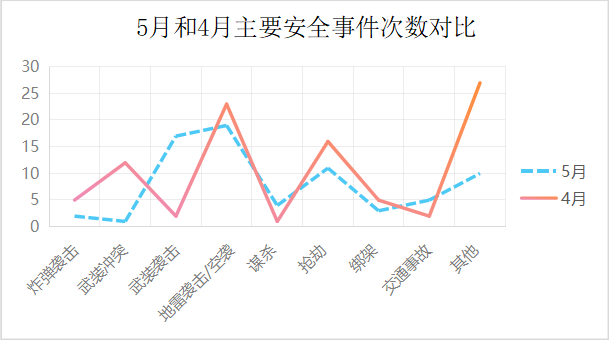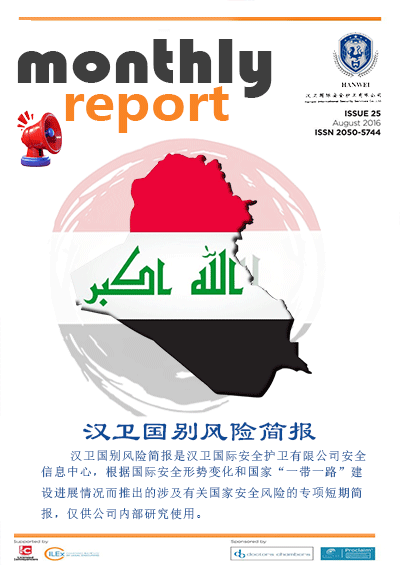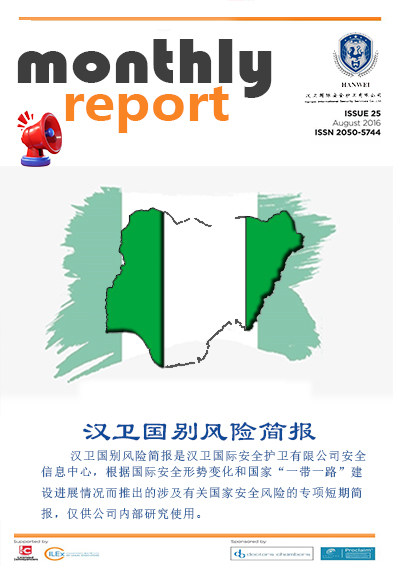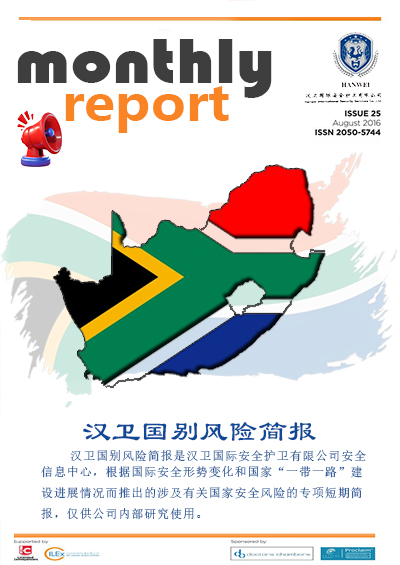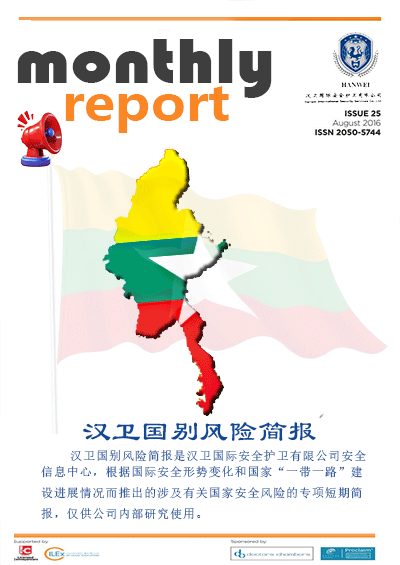Myanmar May Risk Monthly Report
According to the Hanwei International Security Public Opinion Report, a total of 139 representative security incidents occurred in Myanmar in May, 41 more than in April. These incidents resulted in 138 deaths and 138 injuries. Among the categorized security incidents, natural disasters and armed conflicts predominated. The incidents mainly occurred in Shan State, Mandalay Region, etc.
Hanwei International analysis indicates that the situation in Myanmar remains tense with ongoing conflicts. Statistics show an increase in security incidents compared to the previous month, with fewer deaths and significantly fewer injuries, primarily due to stabilizing earthquake conditions. Following the earthquake in Myanmar, armed conflicts temporarily eased as ceasefires were extended, though airstrikes still occurred sporadically.
Extended ceasefire accelerates earthquake relief efforts. On May 1, the Myanmar National Democratic Alliance Army (MNDAA), the Ta'ang National Liberation Army (TNLA), and the Arakan Army (AA) issued a joint statement extending their unilateral ceasefire for another month (May 1-31, 2025) to ensure continued earthquake relief work. On May 5, to expedite the repair of earthquake-damaged buildings, Myanmar's State Administration Council (SAC) announced a further one-month extension, effective from May 6 to 31. This marked the third ceasefire extension since the March 28 earthquake. On May 7, boundary talks between the MNDAA and the Northern Shan State Army in Bangkang Town, Wa Region, reached an impasse, with both sides failing to reach consensus on territorial issues. On May 31, the Myanmar Armed Forces General Headquarters announced another extension of the temporary ceasefire until June 30, 2025, to create a stable environment for earthquake reconstruction and upcoming multi-party democratic elections.
Earthquake may cause lasting economic trauma.Preliminary estimates suggest the earthquake may have caused economic losses equivalent to 70% of Myanmar's GDP. Unless the Myanmar Economic Committee reconsiders its economic policies, the earthquake's aftermath could exacerbate poverty and inflation, reduce export and production capacity, with effects lasting years. Mandalay, as the economic hub of northern Myanmar and a supply chain nexus, hosts thousands of businesses in its industrial and logistics parks. Initial surveys indicate dozens of these enterprises were damaged. Widespread destruction of roads, bridges, telecommunications, and power infrastructure has affected both military-controlled and non-state areas. Myanmar's dry zones, major producers of pulses, oilseeds, and grains (such as sesame, pigeon peas, and chickpeas), typically plant these crops in May. Logistics disruptions may reduce farmers' access to production materials or increase costs, potentially affecting planting (and harvests) and incomes in this already impoverished region. The earthquake's damage and chaos will significantly impact macroeconomics and socioeconomics, including increased poverty and reduced incomes. Exports may decline, pressuring Myanmar's limited foreign exchange reserves and exerting downward pressure on the exchange rate (though foreign aid may partially offset this). S&P Global stated this was one of the manufacturing sector's most severe tests in recent months, with temporary factory closures, plummeting production, reduced input procurement, capacity hitting an eight-month low, and businesses facing multiple pressures on a difficult recovery path.Even before the earthquake, Myanmar was mired in hyperinflation (with the kyat depreciating to 7,000 per US dollar), a food crisis (one-third of the population facing hunger), and manufacturing contraction. The earthquake has further increased poverty rates, with 55% of children in extreme poverty.
Parties assist in post-disaster reconstruction.On May 1, Mandalay Region Governor U Myo Aung met with four IAEA experts and Myanmar scholars at the regional government office to discuss post-earthquake reconstruction, setting important directions for recovery efforts. On May 13, senior leaders of Myanmar's Armed Forces General Headquarters visited the earthquake zone to direct relief and reconstruction, demonstrating the military's efficient response capabilities. On May 29, the second Mandalay Earthquake Donation Ceremony in Naypyidaw raised 13.153 billion kyat and $2.3149 million, providing strong support for reconstruction.
Airstrikes and conflicts remain frequent.On May 1, the anti-junta group "Brave Warriors for Myanmar" (BWM) claimed an April 30 attack with allied forces on the Southern Military Command in Taungoo, Bago Region, firing eight homemade rockets that allegedly hit the commander's residence. After failed talks with the TNLA, the military conducted airstrikes on TNLA-controlled Mogok on May 2, harming civilians. On May 8, the Mon Liberation Army and allied forces attacked Kyaikto Township, Karen State, killing 30 troops and besieging over 1,000 soldiers. On May 18, an attack on Taungoo Air Base killed 10 (including officers) and wounded 12. Artillery shelling continued in Dedaye on May 28.
Myanmar's Health Ministry reported over 860 dengue cases (4 deaths) from January to May 10. A COVID-19 case was confirmed on May 27. Hanwei International recommendations: Dengue, spread by mosquitoes during rainy season, particularly affects children - preventive measures and prompt treatment are crucial. For COVID-19, maintain precautions like masks, handwashing, and social distancing.
Myanmar emergency numbers: Police: 0095-199 | Medical: 0095-192 | Chinese Consulate in Mandalay: 0095-9-259172726 | Chinese Embassy: 0095-9-43209657 | Global领事Protection: 0086-10-12308 or 0086-10-65612308
Chart1: May security incident categories
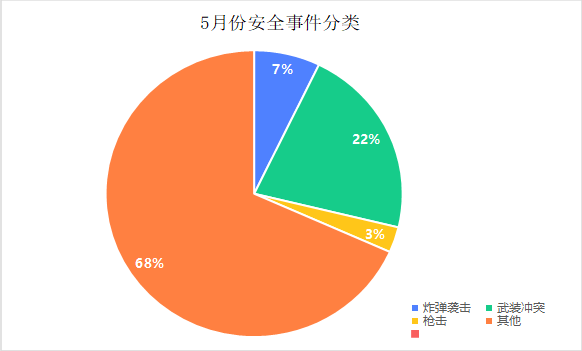
Chart2: May fatalities/injuries statistics
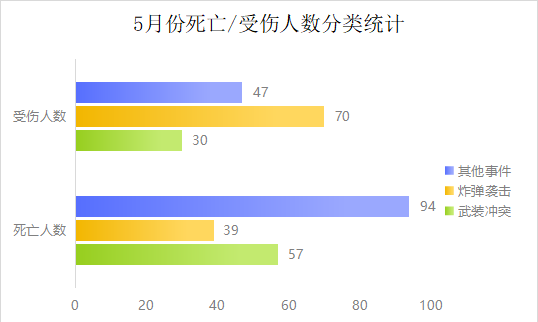
Chart3: May regional incident distribution
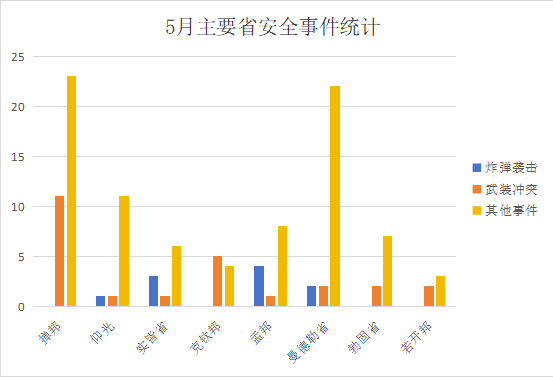
Chart4: May vs April incident comparison
